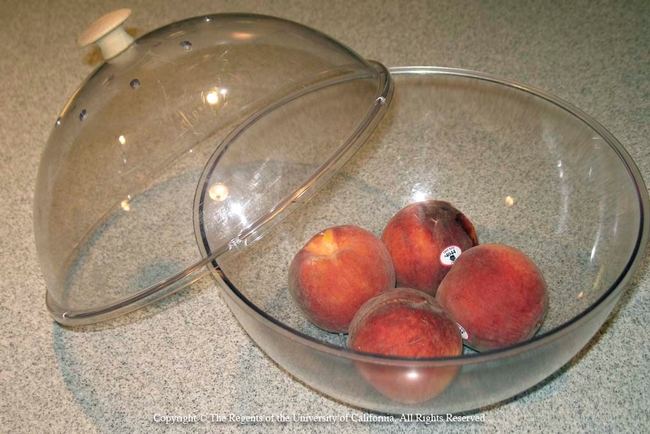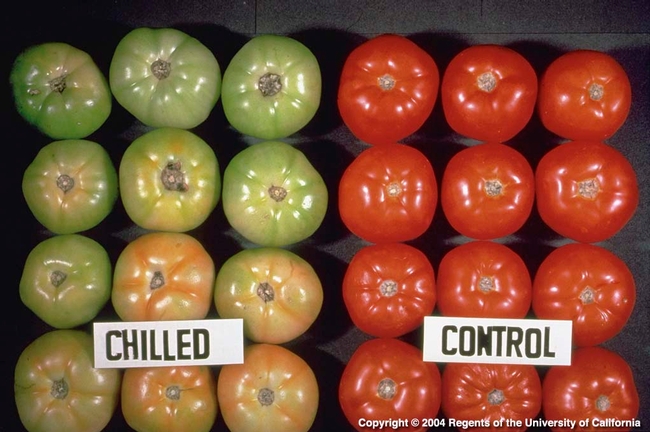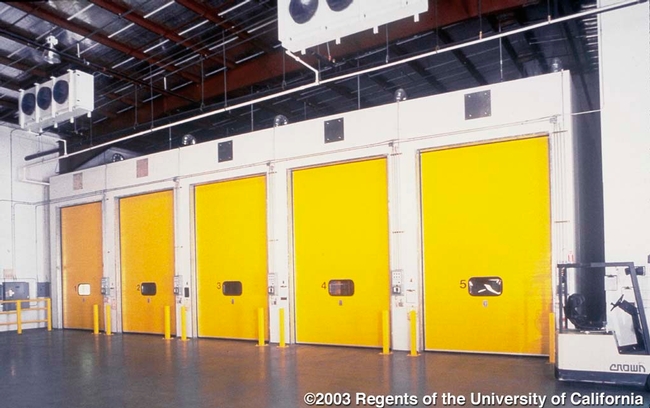You no doubt have noticed that those green bananas you bought at the store a few days ago have steadily turned yellow and are beginning to show some brown spots. Some fruits, like bananas, continue to ripen in some way after they are harvested. We call these “climacteric” fruit.
Climacteric fruit are great if you are selling produce. A grower can pick and ship their fruit while it is immature and depend on it ripening after it's purchased. Gardeners often pride themselves on picking ripe fruit out of their gardens, but it is still good to understand how fruit ripening works, particularly as the season ends in fall.
Many fruits, once they reach a particular level of maturity, will continue to ripen; they are the climacteric fruits. This process is associated with the production of the plant hormone ethylene gas and an sharp increase in respiration. Tomatoes, cantaloupes, pears, apples, peaches, avocados, bananas, and figs are all climacteric fruits; however, their ripening may look a little different for each species.
If you've ever consumed store-bought tomatoes and peaches, you'll note their color and firmness will change, but there isn't an amazing change in sweetness or flavor, whereas pears and bananas transform into a wonderful, tasty treat. That is why home-grown tomatoes are so wonderful, and having fruit trees is still popular despite the hard work needed to maintain them properly.
Not all fruits have this ripening pattern. Grapes, strawberries, pineapple, pomegranate, and citrus are non-climacteric fruits. They tend to last a long time since there is not an ethylene induced burst of respiration. You've probably noticed that citrus fruits taste and look very much the same from the day you get them until you eat the last one. Even non-climacteric fruit eventually will change their character, especially pineapple. It's just not associated with the same burst of physiological activity.
Ripening is an important topic for gardeners to know something about for two reasons: fall harvest and extended storage.
At the end of season you may be tempted to harvest all you can before frost. If a fruit is climacteric, and it is far enough along on the road to maturity, it will continue to ripen. This is handy for tomatoes. Completely immature, green tomatoes may need to be used as such, but if there is a hint of color the chances are good they will ripen on your counter if they did not get too cold. If you have a questionable watermelon in the garden that is underripe, it won't compete the ripening process since it is not climacteric fruit. They need to be picked ripe.
The other key reason as a gardener to understand which fruits are climacteric is to prolong storage. All fruits will ripen more slowly in cooler temperatures, but the ideal temperature varies by fruit. Tomatoes prefer being kept about 50°F but apples are closer to 32°F. Most refrigerators are set around 40°F. If temperatures get too low, then ripening may never happen, but too warm and fruit will continue to mature quickly.
In addition to temperature, climacteric fruit are usually sensitive to ethylene. Not only do they release ethylene gas, but they are very receptive to it. To prolong shelf life and delay ripening, keep ripening fruit away from fruit you are trying to keep from ripening. When you are ready for stored fruit to ripen you can bring it into a warmer location and put it into a bag or with other ripening climacteric fruit to hasten the process.
If you want to experiment with ripening (a good science project to undertake with kids doing distance learning this year) look at ripening pears and bananas. Both are easy to ripen and will show their progress in an obvious way. Underripe fruit are available year-round. Try ripening them at different temperatures, both together and apart.
Now that you know more about fruit ripening, hopefully you will have more options with storing and using produce from your garden and the store.
For more information, see this article which explains the physiology of fruit ripening in much more detail than you really care about. https://core.ac.uk/download/pdf/12042368.pdf


